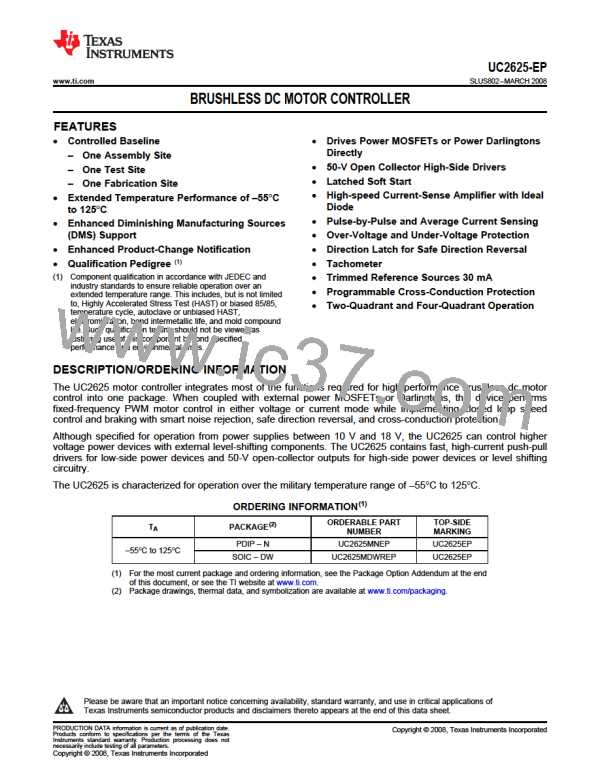UC2625-EP
www.ti.com .................................................................................................................................................................................................. SLUS802–MARCH 2008
For drives where speed is critical, P-channel MOSFETs can be driven by emitter followers as shown in Figure 9.
Here, both the level shift NPN and the PNP must withstand high voltages. A zener diode is used to limit
gate-source voltage on the MOSFET. A series gate resistor is not necessary, but always advisable to control
overshoot and ringing.
High-voltage optocouplers can quickly drive high-voltage MOSFETs if a boost supply of at least 10 V greater
than the motor supply is provided (See Figure 10) To protect the MOSFET, the boost supply should not be
higher than 18 V above the motor supply.
For under 200-V 2-quadrant applications, a power NPN driven by a small P-Channel MOSFET performs well as
a high-side driver as in Figure 11. A high voltage small-signal NPN is used as a level shift and a high voltage
low-current MOSFET provides drive. Although the NPN does not saturate if used within its limitations, the
base-emitter resistor on the NPN is still the speed-limiting component.
Figure 12 shows a power NPN Darlington drive technique using a clamp to prevent deep saturation. By limiting
saturation of the power device, excessive base drive is minimized and turn-off time is kept fairly short. Lack of
base series resistance also adds to the speed of this approach.
Figure 9. Fast High-Side P-Channel Driver
Figure 10. Optocoupled N-Channel High-Side Driver
Copyright © 2008, Texas Instruments Incorporated
Submit Documentation Feedback
15
Product Folder Link(s) :UC2625-EP

 TI [ TEXAS INSTRUMENTS ]
TI [ TEXAS INSTRUMENTS ]